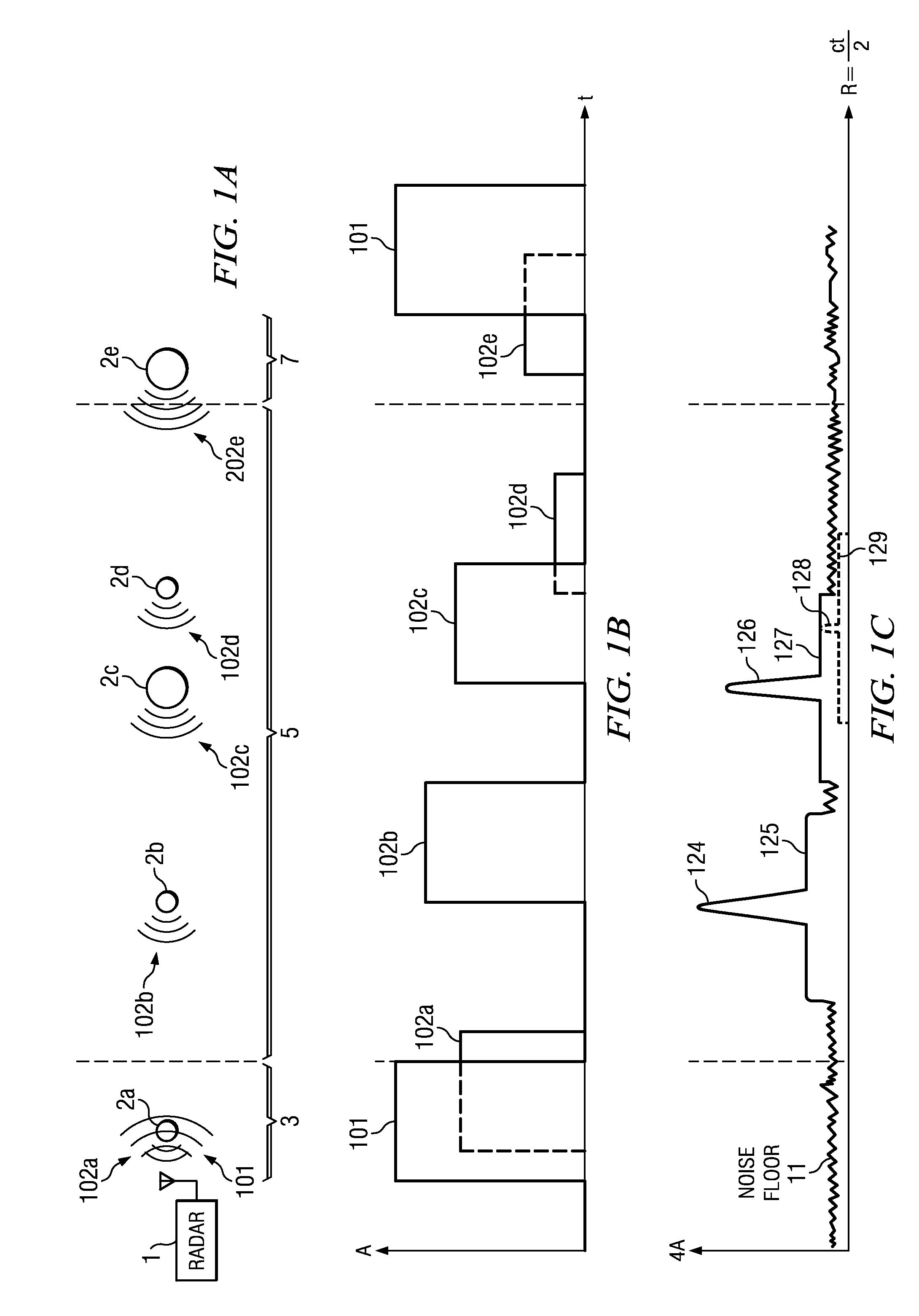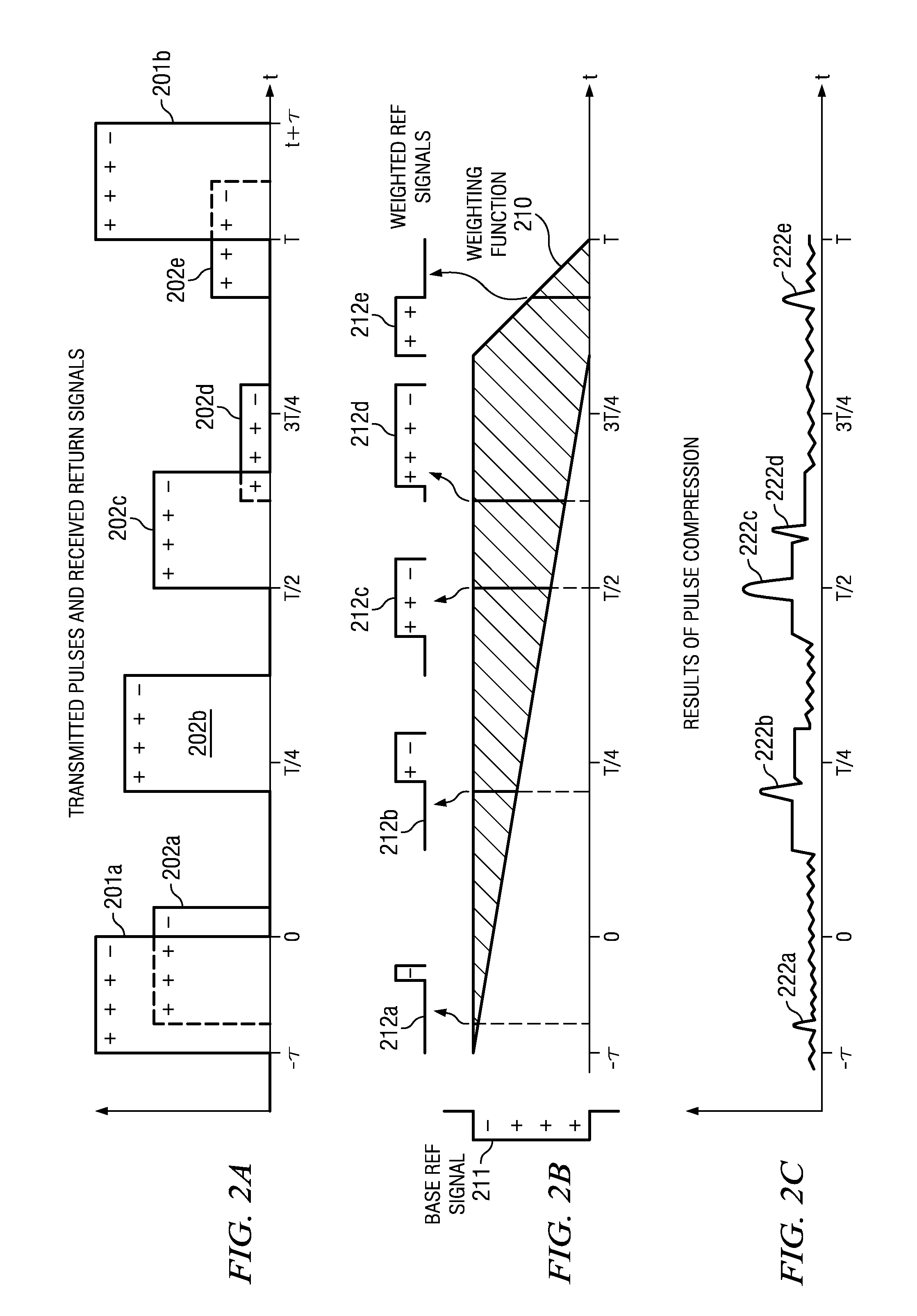High Duty Cycle Radar with Near/Far Pulse Compression Interference Mitigation
- Summary
- Abstract
- Description
- Claims
- Application Information
AI Technical Summary
Benefits of technology
Problems solved by technology
Method used
Image
Examples
Embodiment Construction
[0024]A description of example embodiments of the invention follows.
[0025]FIGS. 1A-1C illustrate conventional pulse compression processing for radar return signals from a variety of targets. As shown in FIGS. 1A and 1B, a radar 1 transmits signals 101 towards targets 2a-2e (collectively, targets 2) at a duty cycle of about 15%. The size of each target represents the size of its radar cross section. (The targets and ranges are not drawn to scale.) Each target reflects the transmitted pulse back towards the radar 1, which receives each reflected pulse at a delay equal to the product of the pulse propagation speed and the round-trip distance between the radar 1 and the subject target. In this example, target 2a reflects the transmitted signal 101 to produce a return signal 102a; target 2b produces a return signal 102b; and so on. The return signals are processed using standard pulse compression to produce the correlation peaks shown in FIG. 1C, where the location of each peak correspon...
PUM
 Login to View More
Login to View More Abstract
Description
Claims
Application Information
 Login to View More
Login to View More - R&D
- Intellectual Property
- Life Sciences
- Materials
- Tech Scout
- Unparalleled Data Quality
- Higher Quality Content
- 60% Fewer Hallucinations
Browse by: Latest US Patents, China's latest patents, Technical Efficacy Thesaurus, Application Domain, Technology Topic, Popular Technical Reports.
© 2025 PatSnap. All rights reserved.Legal|Privacy policy|Modern Slavery Act Transparency Statement|Sitemap|About US| Contact US: help@patsnap.com



